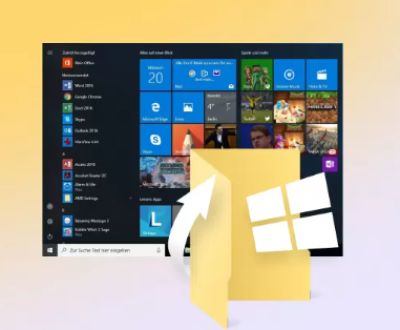When a hard disk is formatted, its data is typically not erased immediately, but instead, the space it occupied is marked as available for new data. This means that, with the right tools and techniques, you can potentially recover files even after the disk has been formatted.
Formatting a hard disk is a common practice for many reasons: whether it’s to clear the drive for new data, fix file system issues, or even repurpose the disk. Unfortunately, formatting doesn’t always go as planned, and sometimes valuable files get lost in the process. Whether you mistakenly formatted a drive, lost critical files due to a system crash, or encountered an accidental data wipe, all hope is not lost.
In most cases, data on a formatted drive can be recovered, provided you act quickly and use the proper tools and techniques. This guide will cover everything from understanding the process of data formatting to step-by-step instructions on how to attempt recovery yourself.

Part 1: Formatting and Data Recovery
What Happens When You Format a Hard Drive?
Formatting a hard disk involves preparing the drive for use by a specific operating system. The formatting process can vary depending on the file system used, such as NTFS, FAT32. exFAT, or others. When a drive is formatted, the following occurs:
File System Reset: The structure of the file system is reset. The file system’s structure is the set of rules that dictates how data is stored, retrieved, and organized on the disk. A fresh format creates a new file system, effectively wiping out previous file structures.
File Deletion: During the process, the pointers to the files (or “directory entries”) are erased, marking the data as available to be overwritten by new files. The data itself is not immediately erased.
Data Overwriting: New files written to the drive can overwrite the areas where old files were stored, making recovery more difficult, especially as more data is added to the disk.
Why Can Data Be Recovered from a Formatted Disk?
When a hard drive is formatted, the operating system typically only removes the file references, not the data itself. As long as new data has not overwritten the original files, it may still be possible to recover the deleted files using data recovery tools. This is why it’s crucial to avoid writing new data to the drive after the format, as doing so could overwrite the old data and make recovery more difficult or even impossible.
Types of Formatting
Quick Format: A quick format removes the file system’s structure but does not overwrite the actual data. It’s the faster option and leaves the data intact, making it easier to recover.
Full Format: A full format erases all data and performs a more thorough check of the disk for errors. While it’s designed to delete everything, the data can still be recoverable in many cases until it’s overwritten.
Part 2: Data Recovery from a Formatted Hard Drive
Step 1: Stop Using the Drive
Once you realize that you’ve formatted the drive by accident or encountered data loss, the most critical first step is to stop using the drive immediately. Any new data written to the drive may overwrite the previously stored files, making recovery much harder. If you continue to use the drive, your chances of successful data retrieval decrease.
Step 2: Connect the Formatted Hard Disk to a Recovery System
To recover the data from a formatted hard disk, you need a second computer to perform the recovery. Here’s how to proceed:
Remove the Formatted Drive: Safely remove the formatted hard disk from its original machine.
Connect to Another Computer: Connect the formatted disk to a different computer via a USB-to-SATA adapter, an external enclosure, or directly via a desktop if possible.
Check for Recognition: Ensure that the computer recognizes the formatted disk. It may show up as a drive with a new file system or as “unallocated space.”
Step 3: Use Data Recovery Software
Panda Assistant is a comprehensive data recovery software designed to help users recover lost or deleted files from a variety of storage devices, including hard drives, USB drives, memory cards, and more. It is widely regarded for its user-friendly interface and powerful recovery capabilities, making it an ideal choice for both novice and experienced users.
One of the standout features of Panda Assistant is its ability to recover a wide range of file types, including documents, photos, videos, and audio files. Whether the files were lost due to accidental deletion, formatting, system crashes, or virus attacks, Panda Assistant can effectively scan the storage device to locate and recover the missing data. The software supports a variety of file systems, such as NTFS, FAT32. and exFAT, ensuring compatibility with most devices.
Step 4: Scan and Recover Data
Once you’ve chosen the recovery software, proceed with scanning the formatted drive. Most recovery programs will offer two types of scanning:
Quick Scan: A faster scan that may find files that are simply deleted or removed.
Deep Scan: A more thorough scan that looks for files in areas of the disk that may have been formatted over.
A deep scan typically takes longer but can uncover more recoverable files, especially if you’ve performed a full format.
Step 5: Save Recovered Files
After the scan is complete, the software will display a list of files that can be recovered. Select the files you need, and make sure to save them to a different drive to avoid overwriting data on the formatted drive.
Part 3: Professional Data Recovery Services
If your DIY efforts fail or you don’t have access to the right software, professional data recovery services can help. These services employ advanced techniques, often using specialized equipment, to recover data from formatted, damaged, or corrupted disks.
Some professional recovery services offer in-lab recovery for cases where the drive is physically damaged, while others can handle remote recovery through specialized software.
Part 4: Preventing Future Data Loss
While data recovery is possible, it’s often a time-consuming and stressful process. To prevent data loss in the future, consider implementing these practices:
Back Up Your Data: Regularly back up your files to an external drive, cloud service, or both.
Use a Reliable Backup Strategy: Implement the 3-2-1 rule: three copies of your data, two different media types, and one offsite backup.
Use Disk Imaging Software: Tools like Macrium Reflect or Acronis True Image allow you to create disk images, which can be restored in the event of a disaster.
Be Cautious with Formatting: Ensure you select the correct drive when formatting. Double-check before proceeding with any operation that may result in data loss.
About us and this blog
Panda Assistant is built on the latest data recovery algorithms, ensuring that no file is too damaged, too lost, or too corrupted to be recovered.
Request a free quote
We believe that data recovery shouldn’t be a daunting task. That’s why we’ve designed Panda Assistant to be as easy to use as it is powerful. With a few clicks, you can initiate a scan, preview recoverable files, and restore your data all within a matter of minutes.
Subscribe to our newsletter!
More from our blog
See all postsRecent Posts
- How to restore deleted images 2025-06-30
- How to restore a deleted file on windows 2025-06-30
- is there any way to restore deleted photos 2025-06-30

 Try lt Free
Try lt Free Recovery success rate of up to
Recovery success rate of up to









